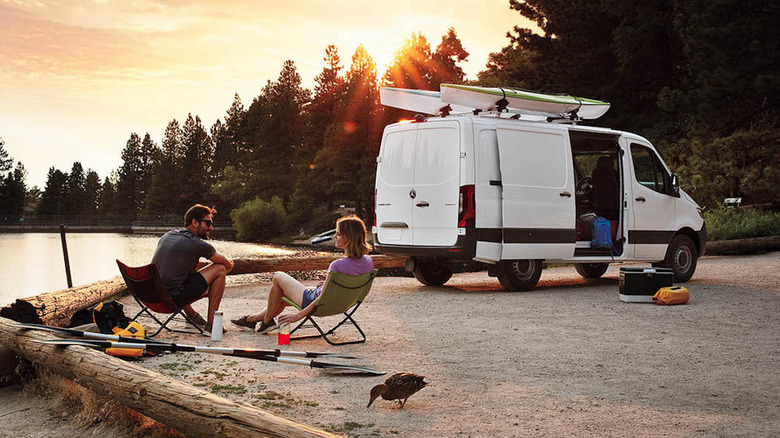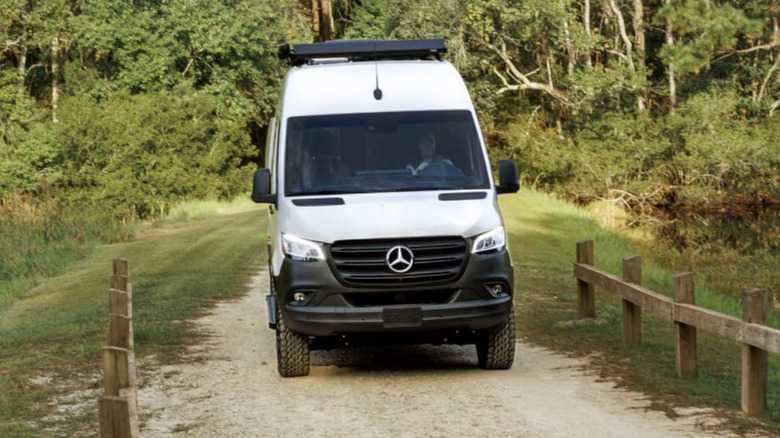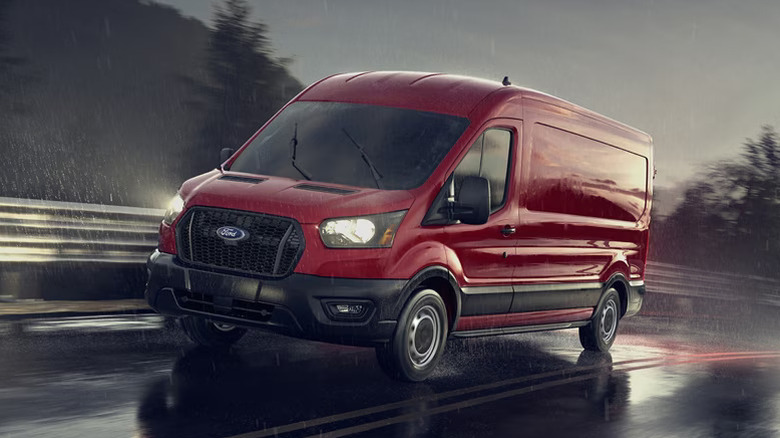Ford Transit Vs Mercedes Sprinter: How Do These Two Camper Conversion Vans Compare?
Van life has exploded in popularity in the last few years. Whether it's full-time travel and living on the road, or just owning a mobile setup for a few weekends of exploration and camping per year, the rolling campsites have a lot of appeal. Lots of vans are smaller and more maneuverable than full-size RVs. They can also be cheaper to buy, less expensive to run (better fuel economy), and easier to maintain. And two of the most popular vans for camper conversions are the Ford Transit and the luxurious-and-capable Mercedes-Benz Sprinter.
Both the Transit and the Sprinter are available in various configurations that offer a ton of space. They have powertrains that are robust enough to pull heavy camping setups, and both offer the convenience of nationwide dealership networks that can perform maintenance or repairs if necessary. Another benefit that both these vans share, is a vast array of available aftermarket parts and available accessories. Either van can be modified extensively.
On top of all the special configurations you can get directly from the manufacturer (like the specialized Ford Transit Trail that capitalized on the van life trend), there are seemingly endless ways to customize your van build, with either the Sprinter or the Transit starting as your foundation. How they stack up against each other in terms of space, available powertrains, and what each van offers, might help you decide which is better for your camper conversion.
Dimensions and interior space
Starting off with the Ford Transit, there are a few distinct ways to construct your van. With the Transit cargo van (passenger van versions are available with both choices, but that would be less useful for camping), there are three different roof heights and lengths available: low, medium, and high roof, and regular, long, and extended length. The high roof configuration is probably your best bet for camping — it measures 110.4 inches tall, and it has a maximum cargo height of 81.5 inches. Even after building in some insulation and things like a floor to walk around on, people over 6 feet tall can still comfortably stand up on the inside. From nose to tail, the longest version of the Transit measures 263.9 inches long, with a total of 536.4 cubic feet of cargo space.
There are only two different roof configurations with the Mercedes-Benz Sprinter: standard and high roof. The high roof model checks in at a total of 108.2 inches tall, slightly shorter than the Transit and offering less standing height at 79 inches. The longest Sprinter, however, is significantly longer than the Ford — 290 inches from bumper to bumper on the 4500 configuration. In certain configurations, the Sprinter Cargo Van offers 533 cubic feet of cargo space, falling behind the Transit by the tiniest margin. So no matter which van you go with, you'll have plenty of room for your gear if you plan properly.
Powertrains and payload
The standard engine for the Transit is a 3.6-liter V6 that produces 275 horsepower and 260 lb-ft of torque. On upper trim levels, a turbocharged 3.5-liter EcoBoost V6 becomes available that provides a healthy infusion of torque; it's rated at 310 hp and 400 lb-ft of torque. For the most part, the EcoBoost engine will be found on high-roof configurations, a helpful addition for pulling around added weight. An electric version (the E-Transit) is also available, but with just 159 miles of range, we think it's better suited to things like delivery driving than cross-country adventures or full-time camper life. The standard gasoline-powered Transit has a maximum payload that ranges between 3,060 and 5,110 pounds, depending on how it's equipped — so loading up your van with lots of accessories shouldn't be a problem.
Depending on which configuration you go with, the Sprinter has a much higher payload capacity, ranging between 3,704 and 6,250 pounds – an overpacker's dream. The Sprinter uses a four-cylinder diesel engine with two different output ratings. Standard output is 170 hp and 295 lb-ft of torque — pretty modest up against Ford's powertrain choices. The high-output version of that 2.0-liter diesel engine puts out 211 hp and 332 lb-ft. That's still less than the Ford, but enough to haul around the van's significant weight. An electric eSprinter is also available, but it has similarly modest range: between 150 and 206 miles on a full charge, depending on which battery you go with.


